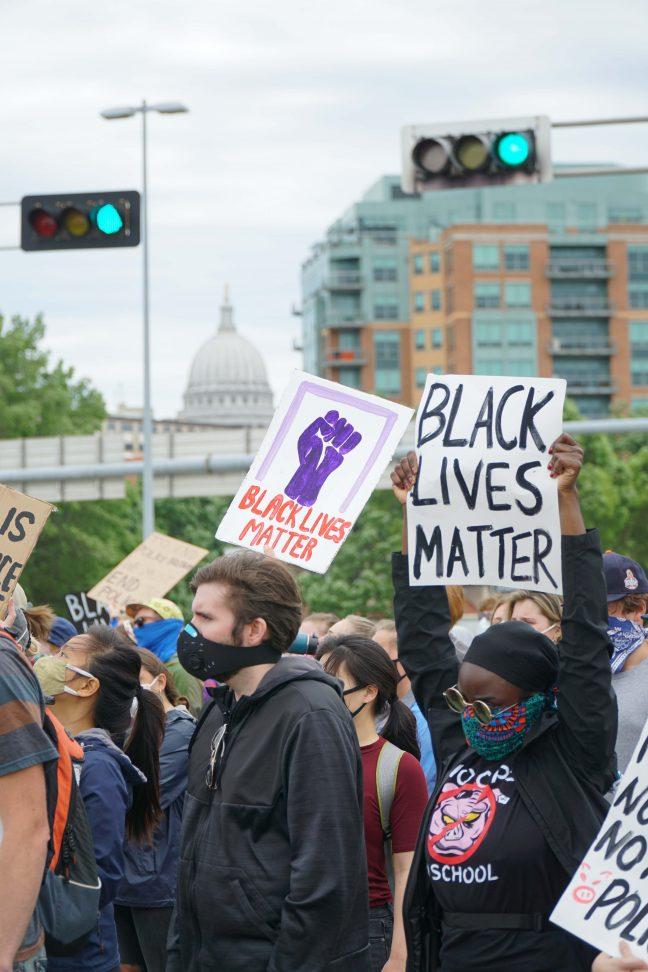As the Black Lives Matter movement slowly disappeared from the public eye, the officers who shot Breonna Taylor were not prosecuted after six months of so-called “investigation.” Here, and with a heavy heart I would like to say, Breonna, I am so sorry justice has not been served for you yet.
The Black Lives Matter movement calls for the police, the government and the American people as a whole to march for social justice. With what happened in Minneapolis with George Floyd and in Kenosha with Jacob Blake, it is safe to conclude this is the time to change not only the current criminal justice system, but also a time to educate the American public on racial and social injustices.
UW, as an educational institution, does not have the power to make laws, but it does have the power to initiate change. The institution should begin by adding more racial minorities to its staff. As Figure 1 (bottom of page) shows, in 2019, 70% of UW employees were white and only 26% of students were non-white.
Why does the university hire employees who have no experience as minorities — or people who have no experience with cultural diversity — to serve minority students? The university should hire more people of color and put them in positions where they can make changes with their expertise or experience creating a more diverse, equitable and inclusive community.
Beyond headlines: Diversity within newsrooms essential for objective reporting
A second step would be to allocate more resources — and budget — to DEI (diversity, equity and inclusion) professionals on campus. The third step would be to ensure faculty and staff members realize DEI makes them more understanding and empathetic toward all students, especially minority students, which helps their task performances and demographic data reading. These three steps mark the beginning of institutional change and enforcing these actions would be key.
Figure 2 (bottom of page) shows only 22% of general employees at Madison belong to minority groups. In terms of student employment, minority students are often underrepresented, discouraged or discriminated against in the hiring process. For example, the student tour guide website shows the face of a minority student, however, in practice the ratio of minority students to white students is extremely small. My experience as a minority student at the university has been positive, but whenever I receive services provided by student employees, I almost never run into minority students and I do not think that the university should use “Wisconsin’s population is predominantly white” as an excuse for not expanding DEI.
DEI is important and necessary to truly achieve equality and justice in dorms, classrooms and offices. It helps students, faculty and employees disrupt their biases against minority students. It also allows everyone to educate themselves on matters of social justice.
With that being said, the university should add additional DEI-related courses, such as African American History or related training as a required part of the general education — apart from the required credits in ethnic studies, which covers a broad range of topics. Education is vital in this process because it greatly shapes student awareness in various ways. More importantly, I firmly believe classrooms are the best and safest places to communicate biases, feelings, thoughts and comments.
Such courses will passively encourage students to explore and engage with existing social and racial issues, as well as to understand the history and reasons regarding social injustices. Having an understanding of racial and social suppression would further help students interrupt and examine their own biases toward minority students.
UW as a flagship university has had great initiatives on achieving equalities on campus. The issue is the enforcement of those initiatives are not strong enough to meet the goals. The university must make more concrete measures, such as adding more curriculum requirements, to further the push for diversity, equity and inclusion for all.
Figure 1: UW-Madison Employees by Race/Ethnicity

Figure 2: Demographics by Employee Category

Ken Wang ([email protected]) is a sophomore majoring in political science.





















